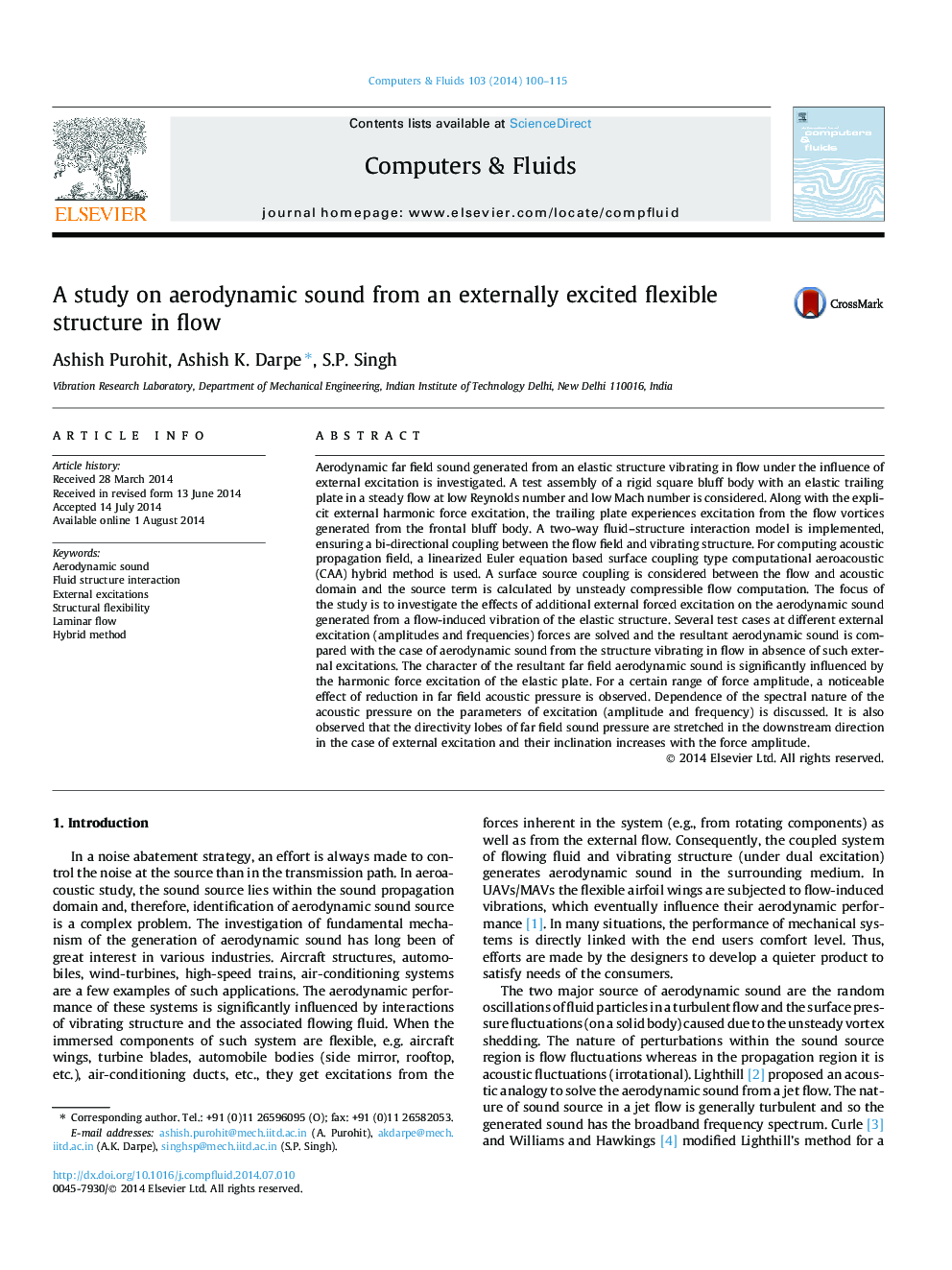| Article ID | Journal | Published Year | Pages | File Type |
|---|---|---|---|---|
| 761846 | Computers & Fluids | 2014 | 16 Pages |
•Aerodynamic sound from a flexible structure in low Reynolds number flow is estimated.•Influence of external excitation on far field aerodynamic sound is investigated.•A two-way fluid structure interaction is accounted in ANSYS workbench.•External excitation influences the amplitude and directivity of far field sound, significantly.
Aerodynamic far field sound generated from an elastic structure vibrating in flow under the influence of external excitation is investigated. A test assembly of a rigid square bluff body with an elastic trailing plate in a steady flow at low Reynolds number and low Mach number is considered. Along with the explicit external harmonic force excitation, the trailing plate experiences excitation from the flow vortices generated from the frontal bluff body. A two-way fluid–structure interaction model is implemented, ensuring a bi-directional coupling between the flow field and vibrating structure. For computing acoustic propagation field, a linearized Euler equation based surface coupling type computational aeroacoustic (CAA) hybrid method is used. A surface source coupling is considered between the flow and acoustic domain and the source term is calculated by unsteady compressible flow computation. The focus of the study is to investigate the effects of additional external forced excitation on the aerodynamic sound generated from a flow-induced vibration of the elastic structure. Several test cases at different external excitation (amplitudes and frequencies) forces are solved and the resultant aerodynamic sound is compared with the case of aerodynamic sound from the structure vibrating in flow in absence of such external excitations. The character of the resultant far field aerodynamic sound is significantly influenced by the harmonic force excitation of the elastic plate. For a certain range of force amplitude, a noticeable effect of reduction in far field acoustic pressure is observed. Dependence of the spectral nature of the acoustic pressure on the parameters of excitation (amplitude and frequency) is discussed. It is also observed that the directivity lobes of far field sound pressure are stretched in the downstream direction in the case of external excitation and their inclination increases with the force amplitude.
